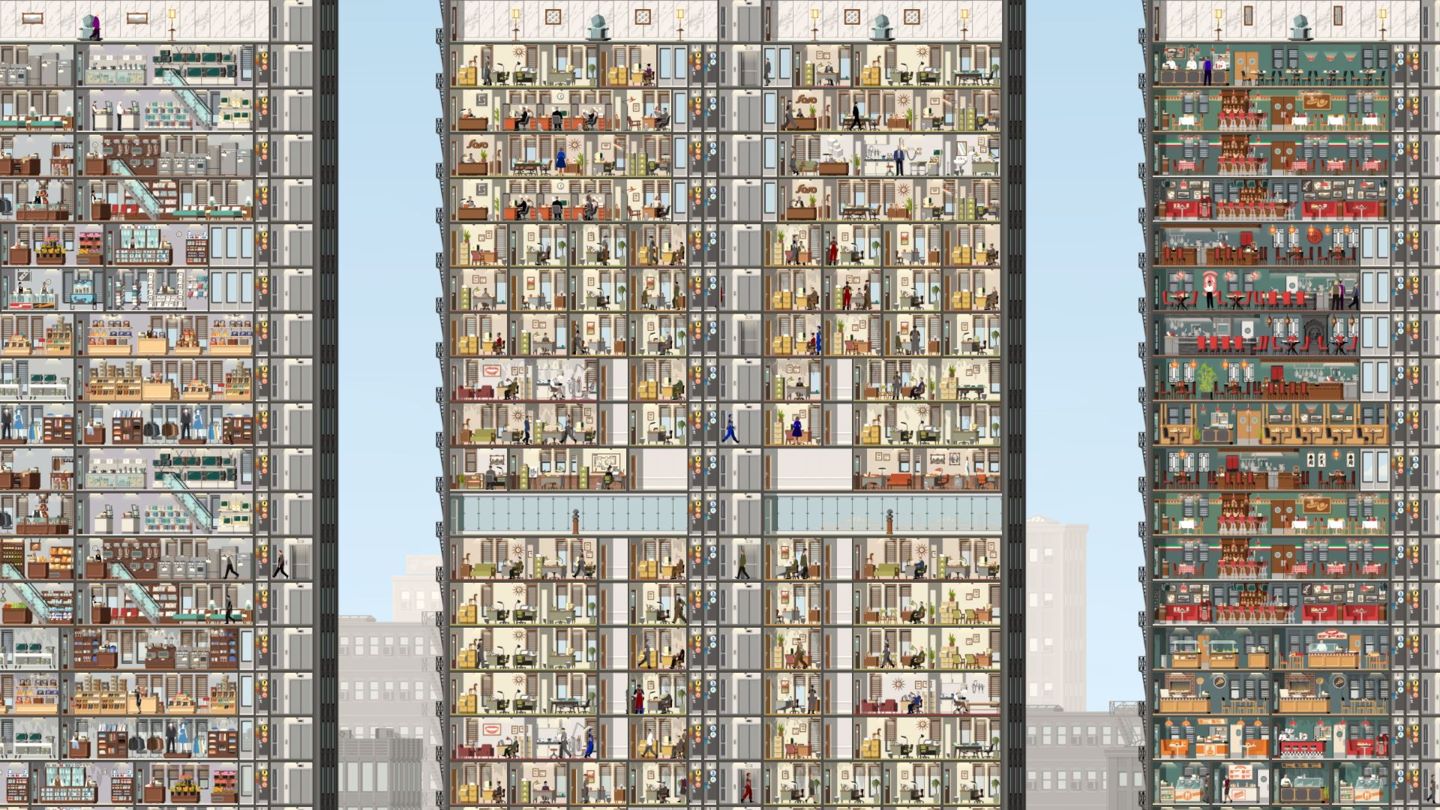Gaming is a beautifully varied pursuit. You can kill half an hour on your way to work matching fruit or flinging birds around, or you can spend hours, even days, constructing detailed worlds whilst taking great care and pride in your creations. And, of course, there is a vast middle-ground between those two extremes to be enjoyed as well.
One of my favourite ways to lose whole days to gaming is to immerse myself in a simulator. Whether I’m building hospitals, roller coasters or whole cities, if the gameplay is formulated properly, I’ll keep coming back for more. So, is Project Highrise worth your free hours and days, and does it tower above the rest?
As you no doubt will have guessed, Project Highrise is a game that will demand many hours of your time as you build and manage skyscrapers that contain everything from offices to casinos. The game has been released on PC previously, but has now arrived on Xbox One as Project Highrise: Architect’s Edition, including all the features of the original and some additional DLC to boot. Despite including all this, the cost feels a bit on the expensive side.
Project Highrise is a complex management simulator, so it includes a tutorial mode which is short, concise and worth a run through. This is optional just in case you fancy diving straight into the action. As extra support, the control map is toggled to the view button on the Xbox controller, which is very handy as you get accustomed with the controls, and saves you having to dig through menus to remind yourself which button does what. It’s a convenient touch. Another feature worth highlighting is the manipulation of time, via the D-pad. This lets you pause or fast forward time, depending on if things are starting to spiral out of control or you need to push actions along a bit. This is a well realised but essential mechanic for a game such as this, to try keep things moving at a decent pace.
The game has two main modes aside from the tutorial; a scenario mode and an “endless” mode. As you can imagine, the scenario mode asks you to meet certain criteria before progressing to the next challenge, whereas “endless” mode, unofficially named by me, is a sandbox affair where you play for as long as you should wish.
Once I started playing, I ran into a control niggle fairly early on. As things progress you can build a mover’s office, which allows you to relocate rooms that you have already built. Now, with these games I insist on organisation, symmetry and tidiness, so if a room isn’t exactly where I want it, it has to be moved. When you highlight said room your selection will highlight “Evict/Remove” by default instead of “Relocate”. If you press “A” one too many times, which is very easy to do after you have scrolled through the build and edit options a few thousand times, you’ll delete the room forever. There is no way to undo this, and it will cost you to replace what you have just lost. The fact that your choice does not default on “relocate”, so if you do accidentally select it you can cancel moving the room with no consequence, is a small but important oversight. To make matters worse, you can only relocate rooms to a completely empty space, not just shuffle them along a few blocks to tidy things up. This makes relocation more expensive and difficult than it ought to be, and for an organisation freak it is very frustrating. Aside from this issue, the controls map to the Xbox pretty well. There are a lot of details and options available to you, however after a short while playing you will comfortably be able to navigate the game, and you can always hit that view button for a helpful reminder.
When you start out there are limited options available to you, to stop you becoming overwhelmed by the choices and guide you through things at a steady pace. Project Highrise uses “Influence” and “Prestige” to unlock more as you progress. Influence, in effect, unlocks different skill trees depending how you want to develop your hotel, and prestige is all about hotel reputation and allows you to run with more developed and complex build options. You can complete contracts throughout, and these can prove crucial for providing income needed to expand. They are pretty simple and will usually require you to reach a certain population cap or build a number of different services in your building.
The key to success is to be wary of your costs from the very start, and don’t attempt to rapidly expand. It can be very difficult, and sometimes impossible, to escape debt once you slip into it. You can use your reports to see where your biggest costs lie, most likely utilities, but cutting these may force tenants to abandon you; your income will fall sharply and it’s all over. This is especially final if you’ve taken out 2 loans (the max allowed) and have no contracts that can be completed to provide a cash boost. Basically if you expand too quickly, you’re screwed. This makes the game pretty unforgiving, and hours of effort can be wiped out quickly once things start to go wrong. You won’t be told it’s game over either, you’ll just have to decide when your situation is too far gone to be saved. It is possible to claw things back, but after the time invested to get there, you’ll find it difficult to justify not just starting from scratch.
To succeed in Project Highrise you have to take your time, keep an eye on the figures and take each day as it comes. This means the gameplay is naturally slow moving – it may prove too slow for some. Things become more repetitive as the action progresses, especially in scenario mode, due to pretty tough targets you need to hit to proceed. It can feel like grinding is essential to hit population or cash income targets, as you resort to building office after office to meet the scenario criteria. Thankfully you can move on once you achieve one of the three available medals, otherwise it would take forever. Things are mixed up later on as you can build apartments, hotels and casinos, but the basic formula, and its problems, remain the same.
Graphically and things are a pretty simple cel shaded affair, but suit the style of the game, keeping everything clear and easily identifiable. The sound is also decent, and you can zoom in on each of the rooms to listen in a bit more closely to what is going on. Laying telephone lines gives a particularly enjoyable and satisfying sound, for this reviewer anyway.
Project Highrise: Architect’s Edition is not quite as addictive as other big hitters in the sim genre, but the game offers an enjoyable experience and a solid challenge with plenty of detailed gameplay to get stuck into. However, things do slow down the further you progress with your building, and can become repetitive which may turn some players away.











